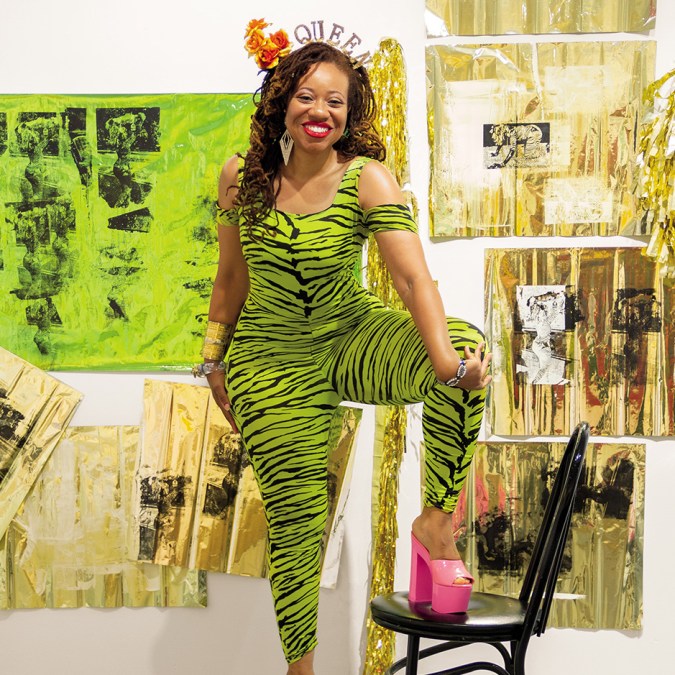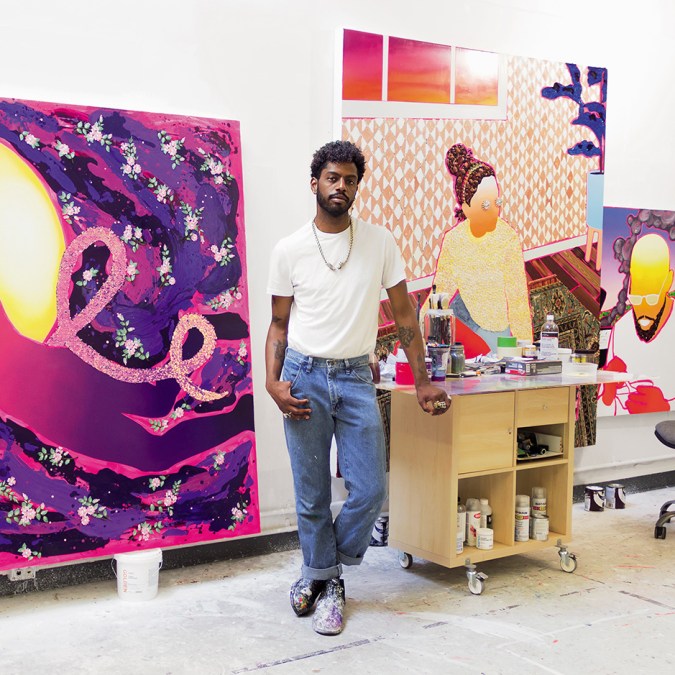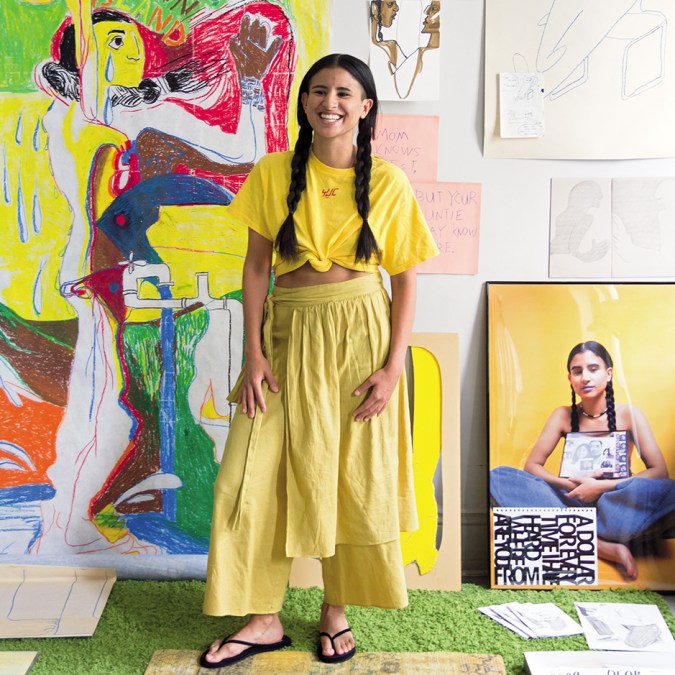The art world often represents some of the most elitist and exclusionary cultural gatekeeping in today’s society, and a pervasive, pernicious lack of diversity might lead many to think that Black and Brown creatives simply don’t exist in such spaces. However, despite being massively underrepresented, many Black, Indigenous and other people of color (BIPOC) individuals aren’t just working in the art world—they’ve found their own radical ways to thrive in it. These are exactly the people that Jasmin Hernandez highlights in her stunning new book, We Are Here: Visionaries of Color Transforming the Art World.
In We Are Here, Hernandez pays tribute to 50 remarkable artists, gallerists, curators and cultural producers of color who are writing their own rules and sparking revolutionary changes in art. The book, published Feb. 2 through Abrams, features original photography and in-depth interviews Hernandez conducted with these thinkers. The project feels like a culmination of the work Hernandez has spearheaded on her website, Gallery Gurls, which is dedicated to boosting the profiles of women and BIPOC of all identities in contemporary art. It’s also a proud document of communities that have reimagined new futures in art and cultural arenas. “They constantly disrupt and challenge us to think deeper and be better for ourselves and for each other,” Swizz Beatz writes in the book’s Foreword.

Remezcla caught up with Hernandez and spoke to her about what inspired the book, what she learned from the visionaries she featured, and how Black and Brown individuals can break down institutional barriers across culture without waiting for permission from anyone.
In the book’s introduction, you write about falling in love with art as a Black Dominican girl growing up in Queens and eventually starting the website, Gallery Gurls, to celebrate women and BIPOC in the art world. When did you decide you wanted to write We Are Here and how did your past experiences with art shape this project?
As a first-generation Afro-Dominican American poor kid, I’m a product of public school (and private school) education. I’m a Black Dominican girl who always loved art and fashion and has been absorbing culture in NYC since I was, like, sixteen or so. I have spent like two decades visiting museums, only donating a penny—the Met [laughs]—or going on weekly free nights. A book was going to come out of me eventually. I was very fortunate to connect with a non-fiction agent who saw potential in an illustrated non-fiction book about BIPOC luminaries in the art world. Gallery Gurls, in many ways, was the ‘practice’ and ‘necessary experience’ to become a published author.
‘We Are Here’ is a book/source/guidebook/manifesto.
When I started to see so many artists I respected and admired featured on TV—Derrick Adams’ work was featured on Insecure at a CAAM exhibit—and appearing on magazine covers—Derrick Adams, Hank Willis Thomas, Jordan Casteel, and Swizz Beatz appeared on the September 2019 Departures Magazine cover—I recognized that as a shift in the culture that needed documentation.
You interviewed about 50 individuals for this book. What did their stories reveal to you about the women and BIPOC working in the art world? What impressed you most about their work?
The subjects are fearless, iconic, and phenomenal in their own ways. Everyone has their own set of obstacles they are pushing past, or have already pushed past, and are working individually or collectively to overcome the societal hoops of fire of racial, gender, and gender identity we as Black and Brown folks face. We Are Here is a book/source/guidebook/manifesto to amplify their platforms, artistry, activism, and radical practices.

The book highlights incredible artists from all over the world and of all identities. Can you tell us about some of the work that moved you the most? How did you find and compile this list of artists?
I hate to sound cheesy but it’s really hard to just choose one or a few subjects! Everyone in this book is a star. I selected and chose folks very organically. I looked at past subjects featured on Gallery Gurls, in my past freelance writing, IG art crushes, etc. I met many folks for the first time at the shoot when they were photographed, after years of following them online. Some people I still haven’t met, like LA subjects such as Rick Garzon, Ramiro Gomez Jr., and Gabriella Sanchez. It’s been nothing but IG love so far between us all these years.
What was most crucial to me is that Black people were the most prioritized.
Some artists I had never even heard of before, like Felipe Baeza or KT Pe Benito. I was researching QTBIPOC artists on my own and found their work online. I didn’t hesitate in emailing them. What was most crucial to me is that Black people were the most prioritized. Black people are the largest group in the book. They are more than half of the 50 subjects, and Black women(all Black women) are the most represented. This was crucial for me as a Black Latinx woman myself, to see us reflected. Overall, there needed to be more women than men in the book, which I made sure of.

One of my favorite parts of We Are Here is when you say, “The hyper-visibility of Black and Brown artists and culture-makers that we’re seeing isn’t a trend. The guard has shifted, and no one, including myself, is asking for permission.” What advice do you have for women and BIPOC interested in the art world and how would you encourage them to forge their own path autonomously, without looking for permission?
Thanks for that! Find your tribe online—online is the first place, especially with past lockdowns and museum/art spaces not being physically accessible. Follow BIPOC artists, curators, gallerists, art collectives, art organizations, art writers, and cultural producers on social media. Learn from them. If they live locally in your city, and you feel there is synchronicity (only if you’re genuinely engaging online), DM them for an art date. See art together, vibe, connect, have coffee, talk shit, and collab. This is how all beautiful connections first blossom. That’s how it happened for me and many of the subjects in the book.




